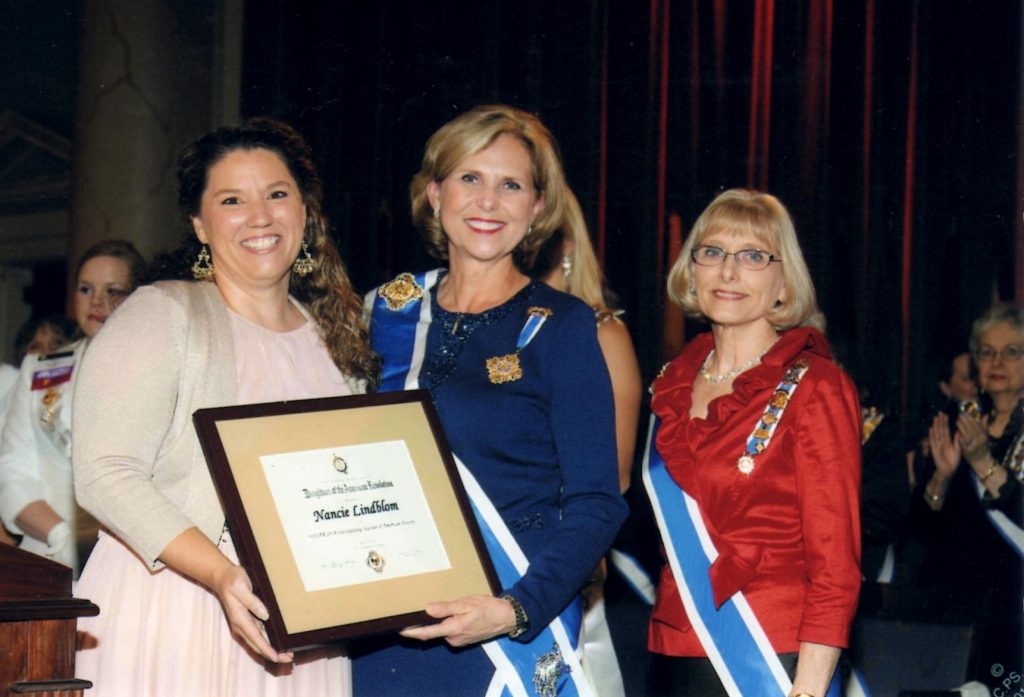Ashbrook Teacher Wins Multiple Awards
December 24, 2020

Ashbrook’s Master of Arts in American History and Government (MAHG) is not the easiest route toward a master’s degree for high school social studies teachers. It demands wide and serious reading in the primary documents of our nation’s history; it concludes with a comprehensive exam or a lengthy writing project. Teachers who choose our program have made serious commitments to educating the next generation of Americans.
Take Nancie Lindblom, a 2014 graduate of Ashbrook’s MAHG program. Her success inspiring high school students to learn and love American history won her the 2013 Arizona Teacher of the Year award. The selection committee, who had viewed a video of her at work in her classroom at Skyline High School in Mesa, Arizona and interviewed students who praised her enthusiasm and commitment, saw her as an excellent spokesperson for educational needs in Arizona. Many teachers who win the award take a year’s sabbatical to do education advocacy, but Lindblom continued to teach, using trusted substitutes to work with her AP US history and government students when she had to travel.

Her redoubled commitments continued into 2014, as she completed her Masters and assumed new missions in educational diplomacy. After she spoke to the local chapter of the Daughters of the American Revolution during Constitution week in September 2013, the group nominated her for their own statewide Outstanding Teacher of American History award. To her surprise, the national DAR named her Teacher of the Year. They invited her to their annual “Continental Congress” in Washington, DC to accept this award.
During the busy spring of 2014, Lindblom drew up lesson plans as part of her capstone for the MAHG degree. She designed a sophomore course that she is piloting this year, called “Defining America.” She borrowed this theme from Ashbrook’s “Presidential Academy,” a three-week summer program that took teachers to Philadelphia, Gettysburg and Washington, DC for historical site visits and seminars on the Founding, the Civil War, and the Civil Rights Movement. Teachers examined what Lindblom calls the postponed “fulfillment of the promise of the Declaration of Independence”—that all American citizens be accorded the rights due them as equals.
Lindblom’s course for sophomores covers this ground, previewing major themes of the fast-paced junior-level AP US History course, while teaching students to analyze primary documents. To launch the course, Lindblom needed to recruit 25 incoming sophomores. She found 50, and so offered the course in two sections.
Many students at Mesa who take AP US History continue into a senior-level government course that prepares them to compete in a national debating competition called “We the People.” Lindblom has added this course to her already challenging schedule, and dreams that the sophomores she is now grooming will progress as seniors to the state, maybe national level competition.
An Ashbrook program gave Lindblom inspiration for a new course; it also equipped her to better teach the American story. “For me, the greatest thing was to be introduced to so many excellent primary sources.” Teachers have little time to wade through the available documents to select those that most clearly illustrate the temper of an era, she said. “As I read through sources the MAHG faculty selected for each graduate course, I tagged those that I thought I could use in my own classes.” At Ashbrook, helping extraordinary teachers like Lindblom do their work is our mission—and our privilege.

